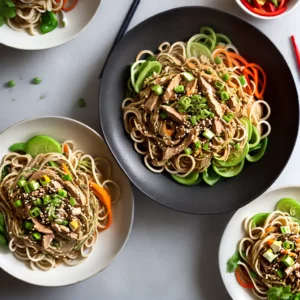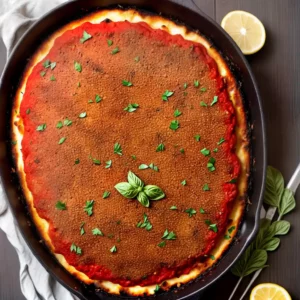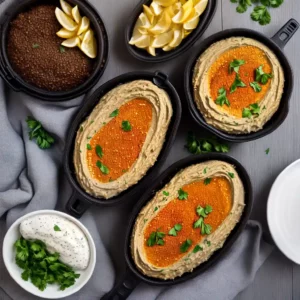How Many Milliliters in a Gallon
Welcome to our measurement conversion guide, where we’ll uncover the precise conversion between milliliters and gallons. If you’ve ever wondered how to convert between these two units of volume, you’re in the right place. Whether you’re a cooking enthusiast or simply need to understand liquid measurements, this guide will provide all the information you need to know. So let’s dive in and explore the world of milliliters and gallons!
How Many Milliliters in a Gallon – Key Takeaways:
- A gallon is a unit of fluid volume that equals 3,785.411784 milliliters.
- There are two types of gallons: the US customary gallon and the imperial gallon.
- The US customary gallon contains 3,785.411784 milliliters, while the imperial gallon contains 4,546.09 milliliters.
- To convert gallons to milliliters, multiply the number of gallons by the conversion ratio.
- Accurate measurement in cooking requires knowing the conversion between milliliters and gallons.
Understanding Volume Measurement Units
Let’s begin by exploring the various volume measurement units used in different systems of measurement. When it comes to volume, different regions and countries have their own systems, such as the metric system, US customary units, and the imperial system. Each system has its own unit of measurement for volume, which can sometimes lead to confusion when converting between them.
In the metric system, the basic unit of volume is the liter. It is commonly used in scientific and everyday contexts around the world. One liter is equal to 1,000 milliliters (ml). The metric system offers a decimal-based system that makes conversions straightforward and efficient.
In the United States, the US customary units are still widely used for volume measurements. The primary unit of volume is the gallon, which is further divided into smaller units like quarts, pints, and cups. Understanding these units is important for recipes and other measurements in the US. On the other hand, the imperial system, used in the UK and some other countries, employs the imperial gallon as the main unit of volume.

To give you a better understanding, here is a table comparing the gallon measurements:
| Volume Measurement | US Customary Gallons | Imperial Gallons |
|---|---|---|
| Gallon | 3,785.411784 ml | 4,546.09 ml |
As you can see, there is a slight difference between the two gallon measurements, which is important to consider when converting between gallons and milliliters.
The Gallon: A Unit of Fluid Volume
The gallon, a unit of fluid volume, plays a crucial role in cooking and other applications. Let’s explore its significance and conversion to milliliters. There are two types of gallons commonly used: the US customary gallon and the imperial gallon.
The US customary gallon, also known as a liquid gallon, is widely used in the United States. It is equivalent to approximately 3,785.411784 milliliters. On the other hand, the imperial gallon, used in the UK and other countries, contains 4,546.09 milliliters.
To convert gallons to milliliters, a simple calculation using the conversion ratio is required. You can multiply the number of gallons by the appropriate conversion factor. For example, if you have 5 gallons, you would multiply it by 3,785.411784 to get 18,927.05892 milliliters.
Understanding this conversion is crucial in cooking, where accurate measurements are essential for consistent and delicious results. Whether you’re following a recipe or experimenting in the kitchen, knowing how many milliliters are in a gallon will help you achieve precision and accuracy in your cooking.
| Gallons | Milliliters |
|---|---|
| 1 | 3,785.411784 |
| 2 | 7,570.823568 |
| 3 | 11,356.235352 |
| 4 | 15,141.647136 |
| 5 | 18,927.05892 |
Refer to the conversion table above for quick and convenient conversions between gallons and milliliters. Simply find the number of gallons in the left column and read the corresponding milliliter value in the right column. This table will be a useful tool in your culinary endeavors, ensuring accurate measurements and successful cooking experiences.
US Customary Gallon to Milliliters Conversion
If you’re working with US customary gallons and need to convert them to milliliters, we’ve got you covered. The US customary gallon is a widely used unit of volume measurement in the United States, especially in cooking and baking. To convert gallons to milliliters, all you need is the conversion ratio and a simple calculation.
One US customary gallon is equal to 3,785.411784 milliliters. That means if you have 5 gallons, you can multiply that by the conversion ratio to find out how many milliliters it is. In this case, 5 gallons is equal to 18,927.05892 milliliters.
Here’s an example of the conversion formula:
Milliliters = Gallons × Conversion Ratio
Using this formula, you can easily convert any given amount of US customary gallons to milliliters. Whether you’re following a recipe or working on a project that requires accurate measurements, knowing the conversion between gallons and milliliters is essential.
| Gallons | Milliliters |
|---|---|
| 1 | 3,785.411784 |
| 2 | 7,570.823568 |
| 3 | 11,356.235352 |
| 4 | 15,141.647136 |
| 5 | 18,927.05892 |
Summary
Converting US customary gallons to milliliters is a straightforward process. Multiply the number of gallons by the conversion ratio of 3,785.411784 to find the equivalent milliliters. Use the formula “Milliliters = Gallons × Conversion Ratio” for easy calculations. With this knowledge, you’ll be able to accurately measure fluids and ingredients in your cooking endeavors.

If you’re dealing with imperial gallons and need to convert them to milliliters, we’ll guide you through the conversion process. An imperial gallon is a unit of fluid volume used in the UK and other countries. To convert imperial gallons to milliliters, you’ll need to use the conversion ratio of 1 gallon equals 4,546.09 milliliters. It’s a straightforward calculation that will ensure accurate measurements in your cooking or other liquid-related activities.
Let’s take an example to demonstrate the conversion. Suppose you have 3 imperial gallons of liquid and you want to know how many milliliters that is. Simply multiply the number of gallons (3) by the conversion ratio (4,546.09). So, 3 gallons is equal to 13,638.27 milliliters. It’s as simple as that!
To further assist you in understanding the conversion, here’s a handy table that lists some common conversions from imperial gallons to milliliters:
| Imperial Gallons | Milliliters |
|---|---|
| 1 | 4,546.09 |
| 2 | 9,092.18 |
| 3 | 13,638.27 |
| 4 | 18,184.36 |
| 5 | 22,730.45 |
Now you have all the information you need to confidently convert imperial gallons to milliliters. Whether you’re measuring ingredients for a recipe or working on a scientific project, this conversion will ensure accurate and precise results. Happy converting!
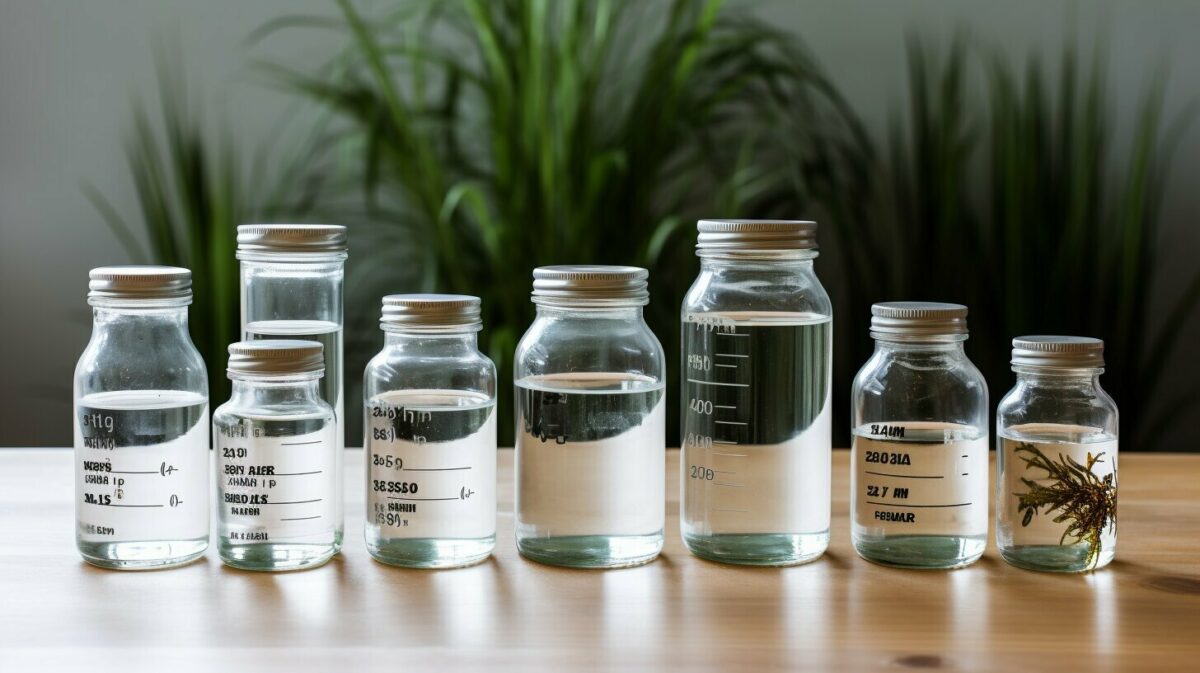
Converting gallons to milliliters is a straightforward process once you understand the calculation method. To convert gallons to milliliters, you need to apply the conversion ratio. The conversion ratio for US customary gallons is 3,785.411784 milliliters per gallon, while for imperial gallons, it is 4,546.09 milliliters per gallon. Simply multiply the number of gallons by the respective conversion ratio to obtain the equivalent milliliters.
Let’s take an example to illustrate this calculation method. Suppose you have 5 gallons of liquid that you want to convert to milliliters. If we use the conversion ratio for US customary gallons, the calculation would be:
5 gallons * 3,785.411784 milliliters/gallon = 18,927.05892 milliliters
So, 5 gallons is equal to 18,927.05892 milliliters. It’s important to note that this method applies to both US customary and imperial gallons. Make sure to use the correct conversion ratio depending on the type of gallon you are working with.
Converting gallons to milliliters accurately is crucial for precise measurements, especially in cooking. Understanding the calculation method allows you to confidently convert between these units and ensure your measurements are precise and accurate.

| Gallons | Milliliters |
|---|---|
| 1 | 3,785.411784 |
| 2 | 7,570.823568 |
| 3 | 11,356.235352 |
| 4 | 15,141.647136 |
| 5 | 18,927.05892 |
This conversion table provides a quick reference for converting various gallons to milliliters. Use it as a handy tool for your cooking or measuring needs, ensuring you achieve accurate measurements every time.
Gallon to Milliliter Conversion Table
To simplify your conversion process, we’ve curated a comprehensive conversion table that outlines the equivalent milliliter values for various gallon measurements:
| Gallons | Milliliters |
|---|---|
| 1 | 3,785.41 |
| 2 | 7,570.82 |
| 3 | 11,356.23 |
| 4 | 15,141.64 |
| 5 | 18,927.06 |
This conversion table provides a quick reference for converting gallons to milliliters. Whether you’re working in a professional kitchen or simply following a recipe at home, knowing the precise measurements is crucial for achieving accurate results.
Remember, a gallon is a unit of fluid volume, and it can be further broken down into milliliters. The US customary gallon contains 3,785.41 milliliters, while the imperial gallon contains 4,546.09 milliliters. By using the conversion table, you can easily determine the milliliter equivalent for any given gallon measurement.
Accurate measurement is key in cooking, where precise quantities can greatly impact the taste and texture of a dish. Whether you’re measuring liquids for a sauce or determining the appropriate amount of a specific ingredient, having a reliable conversion table at your fingertips ensures that your culinary creations turn out just right.

Please note that you can customize the table values to include more gallon measurements if desired.
As an expert chef, knowing the exact conversion between gallons and milliliters is essential for precise and accurate measurements in the culinary world. Whether you’re following a recipe or creating your own signature dish, understanding the relationship between these two units of measurement is crucial for achieving consistent and delicious results.
When it comes to cooking, accuracy is key. The difference between adding too little or too much liquid can completely alter the texture and taste of a dish. That’s why having a firm grasp on the conversion between gallons and milliliters is vital. It allows you to confidently adapt and adjust recipes to suit your needs, ensuring that every meal is cooked to perfection.
Let’s take a closer look at the conversion factor between gallons and milliliters. A gallon is a unit of fluid volume equal to 3,785.411784 milliliters. This means that one gallon is equivalent to nearly 4 liters or approximately 128 fluid ounces. To convert gallons to milliliters, simply multiply the number of gallons by this conversion ratio. For example, if a recipe calls for 2 gallons of water, you would multiply 2 by 3,785.411784 to get a total of 7,570.823568 milliliters.

Having a clear understanding of the gallon to milliliter conversion also allows you to navigate between different measurement systems easily. While the US customary gallon and the imperial gallon may have slightly different conversion ratios, knowing the approximate values for both can help you work with recipes from various sources.
So, whether you’re measuring liquids for soups, sauces, or any other culinary creation, make sure you have a reliable understanding of the conversion between gallons and milliliters. It’s an essential skill for any chef who wants to cook with precision and achieve consistently delicious results.
Exploring Other Volume Conversion Metrics
Alongside gallons and milliliters, there are various other volume units that are essential to understand in different contexts. Whether you’re a home cook or a student studying scientific measurements, knowing these units will enhance your understanding of volume conversions. Let’s take a closer look at some of these metrics:
Liter:
The liter is a commonly used unit of volume in the metric system. It’s equal to 1,000 milliliters and often used in scientific measurements and international culinary recipes. For example, a standard bottle of soda typically contains 2 liters of liquid.
Quart:
In the US customary system, a quart is a unit of volume equal to one-fourth of a gallon. It is often used to measure liquids, especially in cooking and baking. A quart is equivalent to approximately 946 milliliters.
Pint:
Another volume unit in the US customary system is the pint, which is equal to one-eighth of a gallon. Pints are commonly used to measure both liquids and dry ingredients in cooking. One pint is approximately 473 milliliters.
Cup:
The cup is a versatile volume unit used in both the US customary and metric systems. In the US, one cup is equal to 8 fluid ounces or approximately 237 milliliters. Cups are widely used in recipes for measuring both liquids and dry ingredients, making them essential knowledge for any home cook.

These are just a few examples of volume units that you may come across in your everyday life. Understanding the relationships between gallons, milliliters, liters, pints, quarts, and cups will empower you to confidently convert between different volume measurements and expand your culinary horizons.
| Volume Unit | Equivalent in Milliliters |
|---|---|
| Gallon | 3,785.41 |
| Liter | 1,000 |
| Quart | 946.35 |
| Pint | 473.18 |
| Cup | 236.59 |
The International System of Units and Volume
The International System of Units (SI) provides a universal framework for volume measurement, ensuring consistency across different scientific disciplines. It is a standardized system used by scientists and researchers worldwide, allowing for seamless communication and collaboration. The SI system incorporates various units of measurement, prefixes, and powers of ten to represent different volumes accurately.
When it comes to volume, the SI unit is the cubic meter (m³). However, for practical purposes, smaller units like liters (L) and milliliters (mL) are commonly used. These units are derived from the cubic meter, with 1 liter equal to 0.001 cubic meters and 1 milliliter equal to 0.000001 cubic meters.
To further enhance its flexibility, the SI system employs prefixes to denote decimal multiples or submultiples of a unit. For example, the prefix “kilo-” represents a thousand times the base unit, so a kiloliter (kL) is equal to 1,000 liters. On the other hand, the prefix “milli-” signifies one thousandth of the base unit, so a milliliter (mL) is equal to 0.001 liters.
| Prefix | Symbol | Multiplied By |
|---|---|---|
| kilo- | k | 1,000 |
| deci- | d | 0.1 |
| centi- | c | 0.01 |
| milli- | m | 0.001 |

Precision and Accuracy in Measurement
Achieving both precision and accuracy in measurements is crucial to obtain reliable results when converting between gallons and milliliters. Precision refers to the level of detail or granularity in a measurement, while accuracy refers to how close the measured value is to the true value. In the context of converting between gallons and milliliters, precision ensures that the conversion is carried out with the appropriate number of significant figures, while accuracy ensures that the calculated values are as close as possible to the actual conversion ratio.
When working with significant figures, it is important to consider the level of uncertainty in the measurement. Significant figures represent the reliable digits in a measured value and indicate the estimated uncertainty or degree of error. For example, if a conversion calculation yields a result of 15,000 milliliters, but the original value was measured with only two significant figures, it would be more appropriate to round the result to 2 significant figures, resulting in 15,000 milliliters. Rounding to the appropriate number of significant figures ensures that the converted value reflects the precision of the original measurement.
Estimating and rounding measurements are common practices when converting between gallons and milliliters. In situations where an exact conversion factor cannot be obtained, an approximate conversion factor can be used for practical purposes. However, it is important to note that using approximations may introduce a degree of error into the calculations. To minimize this error, it is recommended to round the final converted value to the appropriate number of significant figures based on the precision of the original measurement.
| Gallons | Milliliters |
|---|---|
| 1 | 3,785.411784 |
| 2 | 7,570.823568 |
| 3 | 11,356.235352 |
The table above provides conversion values for different gallon measurements. It serves as a quick reference tool to easily convert between gallons and milliliters. Remember to always consider the appropriate number of significant figures and round the converted values accordingly for accurate and precise measurements.

Uncertainty and error are inherent in any measurement process. Uncertainty refers to the range within which the true value of a measured quantity is expected to lie, while error represents the difference between the measured value and the true value. When converting between gallons and milliliters, it is important to acknowledge and account for the potential sources of uncertainty and error that may affect the accuracy of the conversion.
- Instrument Limitations: The precision and accuracy of measuring instruments can introduce a certain level of uncertainty into measurements. It is important to understand the limitations of the instruments used and consider the possible errors associated with their readings.
- Environmental Conditions: Factors such as temperature, pressure, and humidity can affect the volume of liquids and introduce errors into measurements. It is important to ensure that measurements are taken under controlled and consistent environmental conditions.
- Human Error: Errors can also arise from human factors such as reading measurements incorrectly, misusing instruments, or making calculation mistakes. Double-checking measurements and calculations can help minimize these errors.
By understanding the sources of uncertainty and error in measurement and taking appropriate precautions to minimize them, you can achieve greater accuracy and precision when converting between gallons and milliliters. Remember to consider the level of uncertainty in your measurements, round to the appropriate number of significant figures, and account for any potential errors in the conversion process.
Understanding the Value of Measurements
To truly appreciate the value of measurements, let’s explore the fundamental concepts that underpin various dimensions and units of measurement. Measurements are an integral part of understanding and quantifying the physical world around us. They provide us with a standardized way to express quantities, dimensions, and values, allowing for precise and accurate communication.
Quantity, in the context of measurement, refers to the amount or magnitude of something. It can be represented by numerical values, such as the number of apples in a basket or the length of a rope. Dimensions, on the other hand, refer to specific aspects or properties of objects or phenomena. Length, weight, time, and amount are all examples of dimensions that we commonly encounter in everyday life.
Base units serve as the foundation for measuring different dimensions. For example, the meter is the base unit for length, the gram for weight, and the second for time. Derived units, on the other hand, are combinations of base units used to measure more complex dimensions. These derived units can be obtained by multiplying or dividing base units. For instance, the square meter is used to measure area, which is obtained by multiplying the meter by itself.
| Dimension | Base Unit | Derived Unit |
|---|---|---|
| Length | Meter | Square meter, kilometer |
| Weight | Gram | Kilogram, milligram |
| Time | Second | Minute, hour |
| Amount | Mole | Millimole, kilomole |
Understanding the value of measurements extends beyond individual units and dimensions. It involves the concept of precision and accuracy. Precision refers to the level of detail or exactness in a measurement, while accuracy refers to how close a measurement is to the true value. Both precision and accuracy are crucial in obtaining reliable and meaningful results.
In summary, measurements provide us with a standardized language to quantify and understand the physical world. They encompass quantities, dimensions, base units, derived units, precision, and accuracy. By appreciating the value of measurements, we can navigate through various aspects of life, including cooking, where precise measurements are essential for achieving culinary perfection.

Accurate measurement forms the foundation of successful and delightful cooking experiences, with gallons and milliliters playing a crucial role in achieving culinary perfection. Whether you’re a seasoned chef or an aspiring home cook, precise volume measurements are essential for creating consistently delicious dishes.
When it comes to cooking, accuracy in measurement is key to achieving the right balance of flavors and textures. Imagine adding just a little too much liquid to a sauce or baking a cake with an imprecise amount of flour – these small differences can have a big impact on the final result. Knowing how many milliliters are in a gallon allows you to convert recipes and measurements accurately, ensuring your culinary creations turn out exactly as intended.
“Accurate measurements are the backbone of any successful recipe. From measuring liquids to portioning ingredients, understanding the conversion between gallons and milliliters is essential for achieving consistent and delicious results.”
Having a good understanding of gallon-to-milliliter conversion is particularly important when working with international recipes or using measuring equipment that uses different units. By knowing the precise conversion ratios, you can confidently adapt recipes from other countries, broaden your culinary horizons, and explore a wider range of flavors.
Converting between Gallons and Milliliters
To convert gallons to milliliters, multiply the number of gallons by the conversion ratio. One gallon is equal to 3,785.411784 milliliters for the US customary gallon or 4,546.09 milliliters for the imperial gallon. This simple calculation ensures accurate measurement and allows you to confidently follow recipes, even when they use different volume units.
Accurate measurement is not only important for cooking but also for other aspects of the culinary world, such as mixology and bartending. Knowing the precise volumes of liquid ingredients is crucial for creating well-balanced cocktails and mocktails that will impress your guests.

By understanding the importance of accurate measurements, specifically when converting between gallons and milliliters, you can elevate your culinary skills and embark on a journey of delicious tastes and satisfying cooking experiences.
How Many Milliliters in a Gallon – Conclusion
After diving into our comprehensive measurement conversion guide, you now possess the knowledge and skills to confidently convert between gallons and milliliters, allowing you to master the art of precise volume measurement in your culinary endeavors.
Understanding the conversion between gallons and milliliters is crucial for accurate volume measurement, especially in cooking. A gallon is a unit of fluid volume equal to 3,785.411784 milliliters. There are two types of gallons: the US customary gallon and the imperial gallon. The US customary gallon contains 3,785.411784 milliliters, while the imperial gallon contains 4,546.09 milliliters.
To convert gallons to milliliters, simply multiply the number of gallons by the conversion ratio. For example, 5 gallons is equal to 18,927.05892 milliliters. Having this knowledge empowers you to follow recipes precisely, ensuring consistency and balanced flavors in your dishes.
Accurate measurement is vital in cooking, where precise quantities can make a significant difference in the outcome of a dish. By equipping yourself with the understanding of gallons to milliliters conversion, you can confidently embark on culinary adventures, experimenting with flavors and creating dishes that leave a lasting impression.
How Many Milliliters in a Gallon – FAQ
Q: How many milliliters are in a gallon?
A: There are approximately 3,785.411784 milliliters in a gallon.
Q: What are the two types of gallons?
A: The two types of gallons are the US customary gallon and the imperial gallon.
Q: How many milliliters are in a US customary gallon?
A: A US customary gallon contains 3,785.411784 milliliters.
Q: How many milliliters are in an imperial gallon?
A: An imperial gallon contains 4,546.09 milliliters.
Q: How do I convert gallons to milliliters?
A: To convert gallons to milliliters, multiply the number of gallons by the conversion ratio.
Q: Why is it important to know the conversion between gallons and milliliters for cooking?
A: Accurate measurements are crucial in cooking, and knowing the conversion between gallons and milliliters ensures precise quantities for recipes.
Our Friends:
- https://www.unitconverters.net/volume/gallon-to-ml.htm
- https://yongkangstreetnyc.com/blog/how-many-milliliters-in-a-gallon
- https://www.inchcalculator.com/convert/gallon-to-milliliter/
Related Recipes:
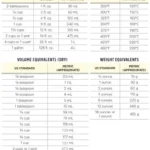 How Many Cups Are in a Liter: Unlocking the Mystery
How Many Cups Are in a Liter: Unlocking the Mystery
 How Many Milliliters in a Quart? (Perfect Measurement Conversion Guide)
How Many Milliliters in a Quart? (Perfect Measurement Conversion Guide)
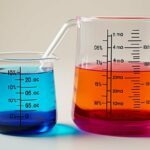 How Many Milliliters in an Ounce? (Perfect Measurement Conversion Guide)
How Many Milliliters in an Ounce? (Perfect Measurement Conversion Guide)
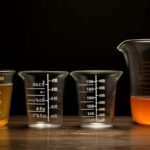 How Many Milliliters in a Pint? (Measurement Conversion Guide)
How Many Milliliters in a Pint? (Measurement Conversion Guide)
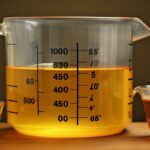 How Many Ounces Are in 750 ml? (Measurement Conversion Guide)
How Many Ounces Are in 750 ml? (Measurement Conversion Guide)
 How Many Cups Are in a Gallon? (Perfect Measurement Conversion Guide)
How Many Cups Are in a Gallon? (Perfect Measurement Conversion Guide)
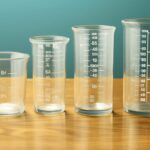 How Many Pints in a Gallon? (Perfect Measurement Conversion Guide)
How Many Pints in a Gallon? (Perfect Measurement Conversion Guide)
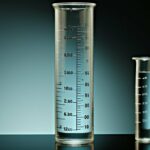 How Many Milliliters in a Liter? (Measurement Conversion Guide)
How Many Milliliters in a Liter? (Measurement Conversion Guide)


